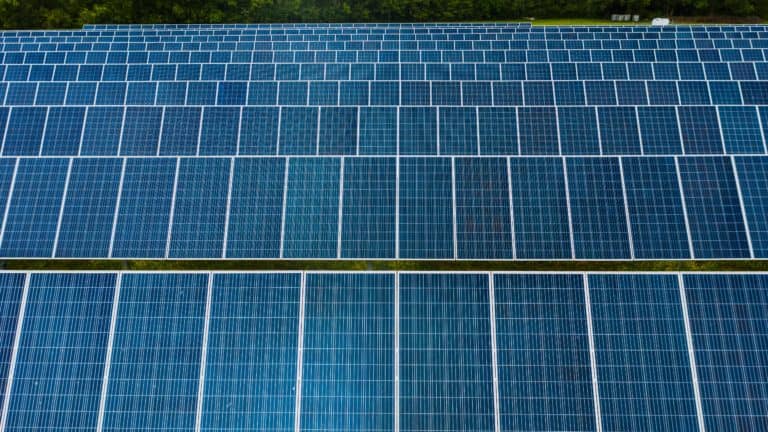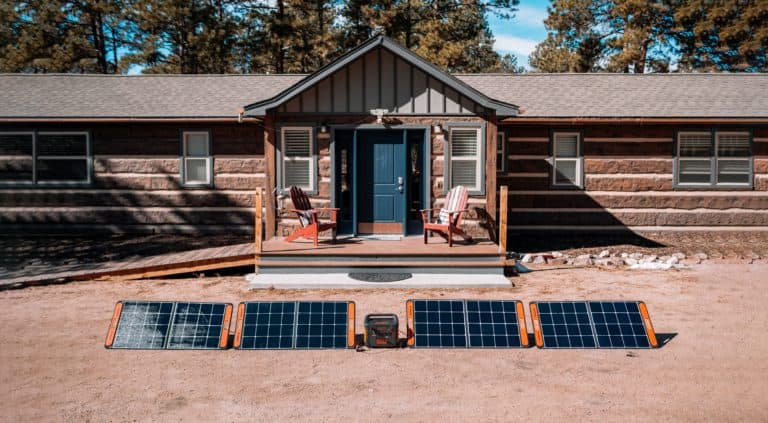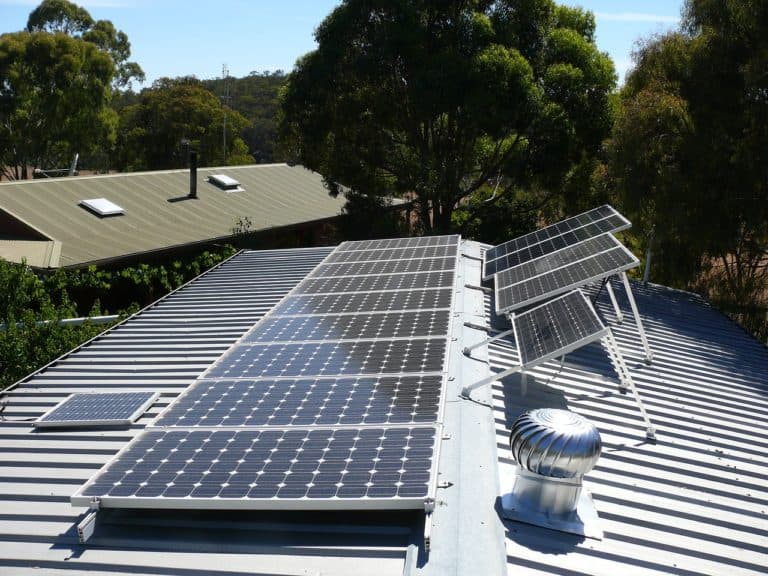111 best eco-friendly ideas for the home
It’s no secret that going green can save you money while helping the environment. But what are the best eco-friendly ideas for the home?
We’ve got you covered with 100+ top tips and real examples you can apply immediately for the best results so read on and start saving those pennies (and the planet)!
Areas of green living covered are:
- Surface cleaning
- Laundry
- Energy
- Home insulation
- Shopping
- Transportation & commuting
- Gardening & farming
- Clothing and fashion
- Baby care
- Kitchen
- Bathroom
- Gift giving
- General DIY
Best eco-friendly items for surface cleaning?
Eco-friendly home ideas for homemade natural cleaning solutions can serve as alternatives to the commonly used harsh chemicals while also reducing the need for plastic packaging. Examples of natural cleaners are:
#1. Vinegar and water
With the right mix of vinegar and water, you can create an effective eco-friendly home cleaning solution great at eliminating stains and dirt for different parts of your house without compromising safety or quality.
The vinegar’s natural acidity means that it can break down dirt, grime, and germs while still being gentle enough to be used on various surfaces around the home including kitchen countertops, bathroom fixtures, hardwood floors, glass windows and more.
#2. Baking soda
Not only is it an environmentally friendly and affordable product but baking soda can also be used in a variety of ways to clean surfaces, deodorise rooms, and remove stains from fabrics.
Baking soda is a gentle scrubbing agent and would do well on surfaces like sinks, bathtubs, and ovens.
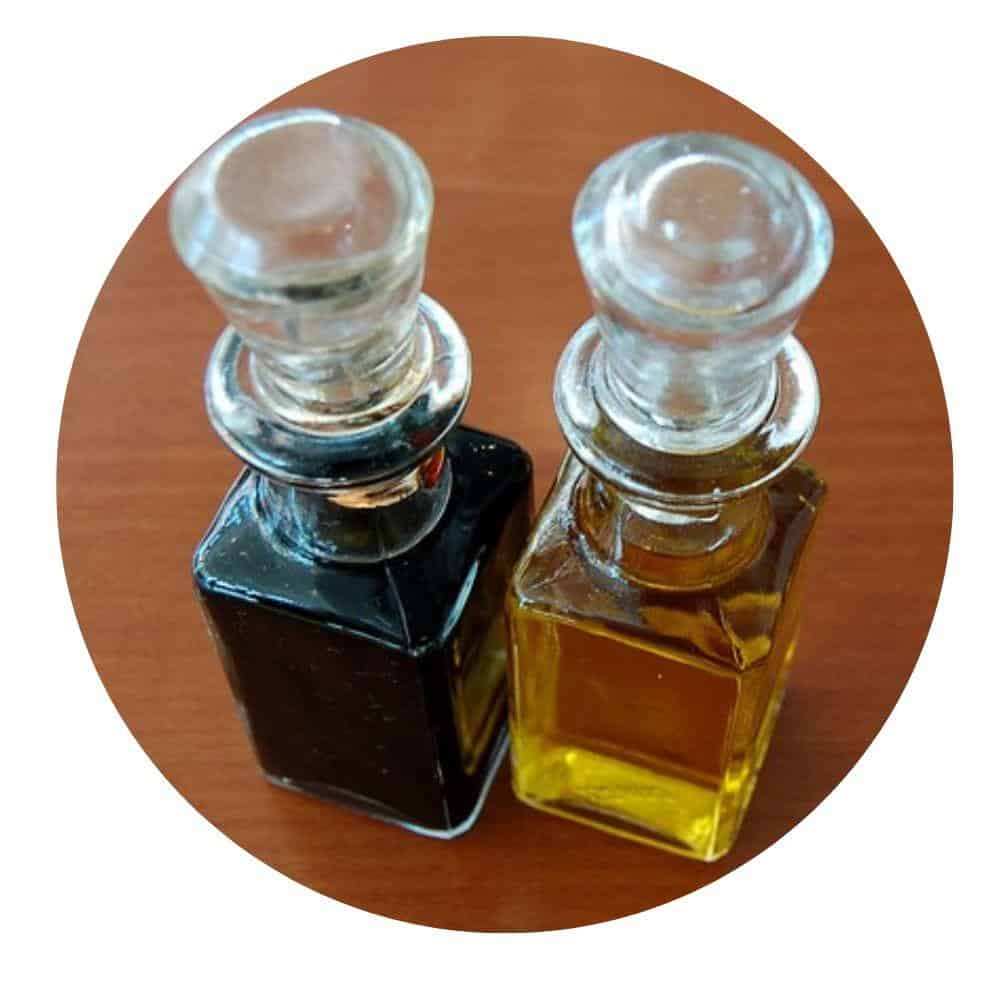
#3. Lemon juice
This is an excellent and sustainable alternative to conventional home cleaning products. Lemon juice possesses natural germ-killing properties. Not only does it effectively remove dirt, grime, and odours from surfaces, but it also has several additional benefits.
Lemon juice is naturally acidic, which means that it can help break down grease or other tough substances without the need for harsh chemicals.
#4. Essential oils
Essential oils (tea tree, peppermint, and lemon) are made from natural ingredients and are biodegradable, meaning they will not harm the environment when disposed of.
They contain antibacterial properties which can be used to fight bacteria and germs in your home. Additionally, they provide a pleasant scent and fragrance while also enhancing their cleaning strength.
#5. Castile soap
Castile soap is really growing in popularity. It is made from plant-based ingredients, such as olive oil, coconut oil, or jojoba oil. These oils are combined with lye and water to create what is called Castile soap.
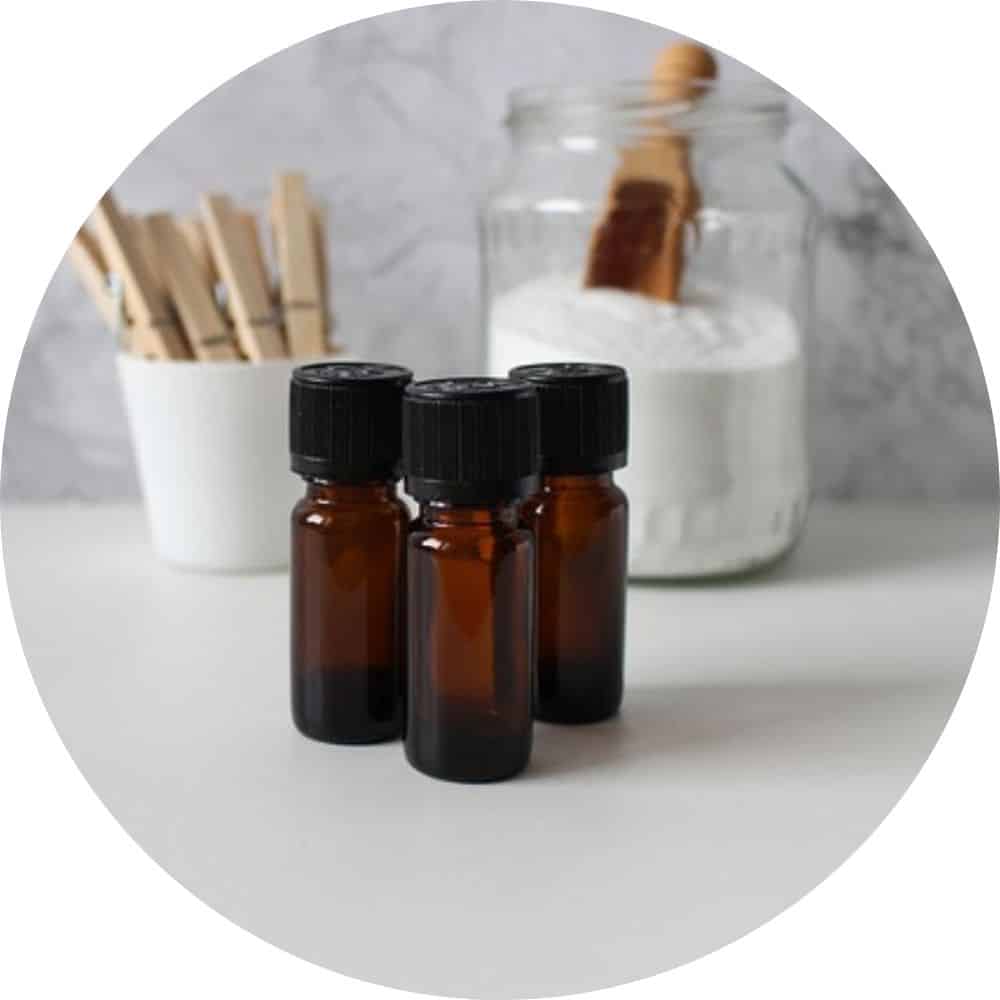
Castile soap is a multi-purpose cleaning agent that can be used for various cleaning tasks such as surfaces, floors, laundry and even dishes. It can also be used to make your own eco-friendly home cleaners such as all-purpose scouring powder. For most uses, you should dilute the soap with warm water before using it on surfaces or fabrics. You may find that some stubborn stains require a stronger solution of undiluted Castile soap to remove them adequately.
#6. Hydrogen peroxide
Hydrogen peroxide is a naturally occurring compound that can be used as an effective and eco-friendly home cleaning product. It has powerful antibacterial and antifungal properties, making it a great choice for sanitising and disinfecting kitchen counters, sinks, toilets, and bathtubs surfaces around the house.
It is also non-toxic, affordable and can also be used for laundry purposes. Adding a small amount of hydrogen peroxide to your wash cycle will effectively remove stains and leave clothes smelling fresh. In addition, it can be used for mould and mildew removal, as well as carpet cleaning. When used in a diluted form, hydrogen peroxide is safe to use on most surfaces and fabrics. To maximise its effectiveness, it should be used with other green cleaning products such as vinegar or baking soda.
#7. Club soda
Club soda is a great alternative to traditional home cleaning products as it is incredibly versatile and sustainable. It is an effective sanitizer and deodorizer, perfect for cleaning surfaces such as counters, sinks, and floors.
Additionally, it can be used in removing stains from carpets, furniture upholstery, and other fabrics. To use club soda for cleaning, simply pour it on the desired surface and use a scrub brush or cloth to wipe off the dirt. For tougher stains, let the club soda sit for a few minutes before scrubbing.
#8. Corn-starch
Corn-starch is an easily accessible and versatile cleaning product. It can be used in a variety of eco-friendly home cleaning recipes, helping to reduce the amount of chemicals used for household chores.
Corn-starch works well as a gentle scrubbing agent for bathroom and kitchen surfaces, and it can also be mixed with vinegar or lemon juice to create a polishing paste for furniture and fixtures. When used as a cleaning agent, corn-starch should be mixed with warm water until it is the consistency of paste before being applied to surfaces. After use, it can simply be wiped off with a damp cloth or sponge. Corn-starch also works well as a deodoriser.
#9. Borax
This substance has been used as a home cleaner since the 19th century and remains an affordable, non-toxic choice today. Borax is a naturally occurring mineral that can be used as an effective, sustainable home cleaning product. It is made up of boron, oxygen and sodium ions.
Borax can be used to clean floors, bathrooms, and kitchens with minimal effort. It is also great as a mould remover, getting rid of bad odours and can be used to make homemade laundry detergents.
#10. Soapnuts
The soapberry tree is native to India and Asia and its dried fruit has been used in Hindu culture as a natural detergent since ancient times. Soapnuts contain saponin, a natural surfactant.
Soapnuts are non-toxic and 100% biodegradable, making them an ideal eco-friendly home cleaning product for those who are looking to avoid harsh chemicals and reduce their environmental footprint. it is important to remember that they should not be used on hard surfaces such as countertops or sinks. Instead, the berries should be placed in a cloth bag and added to a load of laundry or boiled in water and added to soapy water for use as a floor cleaner.
#11. Cornmeal
Cornmeal contains all-natural ingredients such as maize flour, non-ionic surfactants, and natural oils which make it effective at removing dust, dirt, grease, and grime. It’s also capable of killing bacteria, which makes it an ideal choice for people who prefer to use a natural cleaning product to reduce the amount of chemicals they introduce into their homes.
Additionally, cornmeal is a relatively inexpensive option compared to many other home cleaning products on the market today.
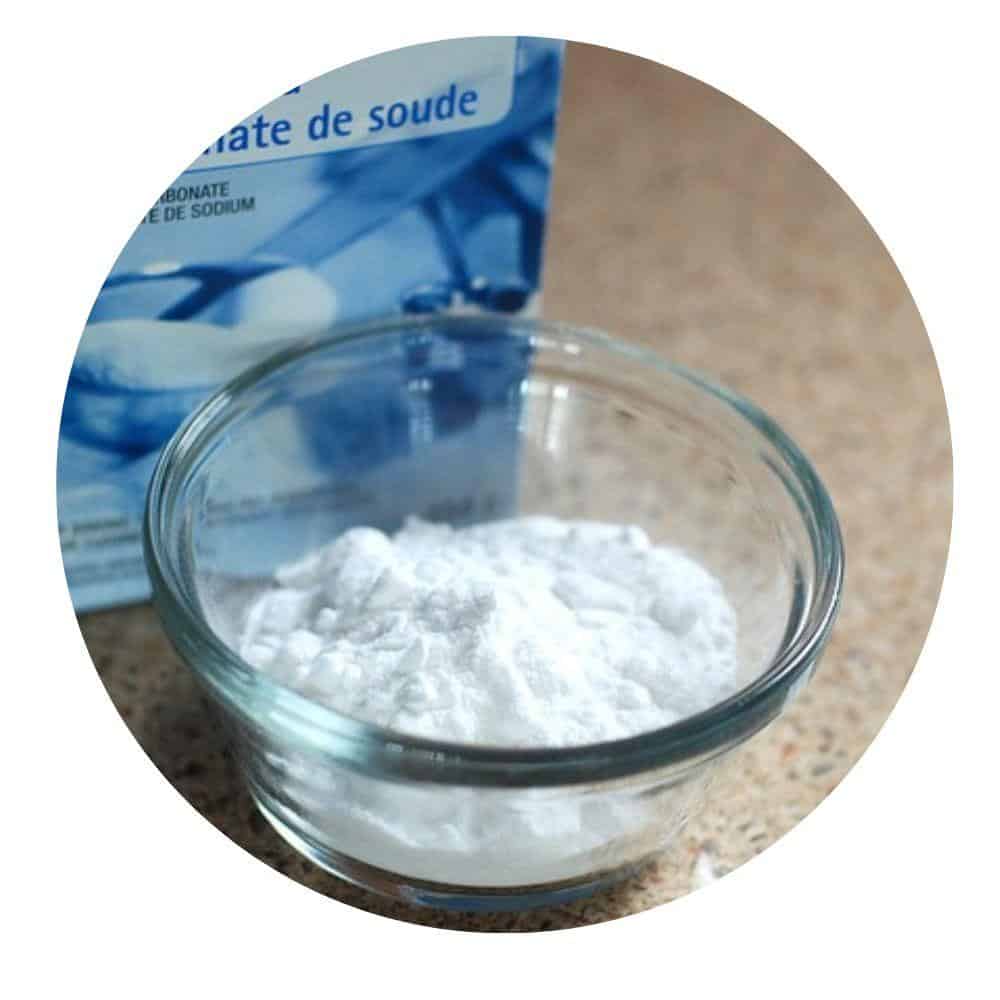
#12. Aloe vera
The aloe vera plant is an excellent choice for sustainable home cleaning solutions. The plant’s gel-like inner leaf has properties that make it a powerful and natural all-purpose cleaner. It is effective at removing dirt, grease, and bacteria from surfaces without the use of harsh chemicals.
Additionally, Aloe vera has antifungal, antibacterial, and antiseptic properties, so it can be used to clean and disinfect surfaces without the need for chemical-based cleaners. It is also a natural deodorizer and can help eliminate unpleasant odours from carpets and furniture. Aloe vera’s non-toxic nature makes it safe to use around the home.
Best sustainable methods for laundry
According to the International Union for Conservation of Nature, more than 33% of microplastics that are released into the world’s oceans come from the washing of synthetic textiles. Polyesters tend to contribute more than six times as much microplastics when compared to nylon.
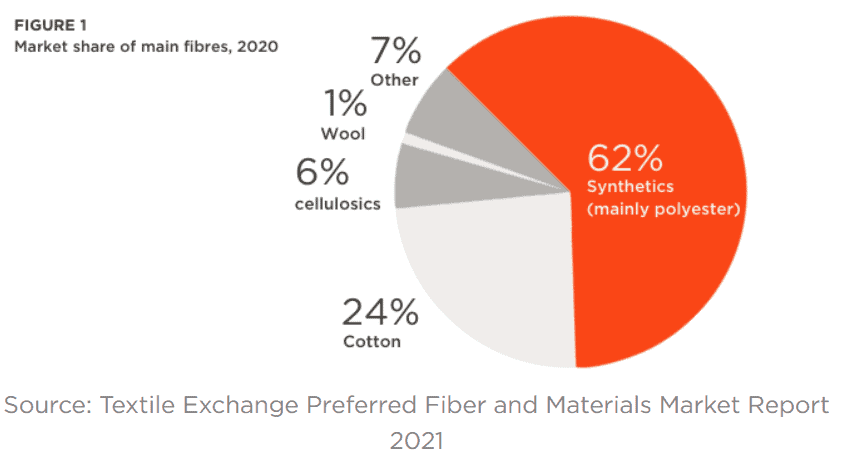
#13. Utilise plant-based laundry detergents
Yes, although already covered above when considering cleaning items, it is very important to really emphasise here that laundry detergents that are plant-based should be the go-to option for washing your clothes.
Just as a reminder, these detergents are composed of natural ingredients hence they lack harsh chemicals. Also, they do not contaminate the water supply.
#14. Hang clothes to dry
Rather than utilising an electric or gas-powered dryer, why not just hang your clothes to dry either outside or somewhere you can guarantee a lot of space.
Very cheap cloth’s line can be purchased or if you are like me, just improvise to make things work. This is not only energy-saving but also helps to prolong the lifespan of your clothes.
#15. Wash clothes in cold water
This is another very important energy saving tip for an eco-friendly home. But do you realise that a very high proportion of energy that is consumed when doing laundry used to heat the water? Well, this depends in most parts on the settings of your washing machine if you are using one in this case. But if handwashing, if better because you can control what temperature of water you might want to use.
It would be best to tone down the temperature setting of your washing machine to ensure you are allowing relatively much colder water for the clothes.
#16. Do laundry only when there’s enough clothes
This might seem like advising you to prolong your washing schedule. But you see, if you think about it, you will realise that allowing those clothes to pile up a bit longer can save our planet more.
Also, for the sake of prolonging the life of the washing machine you are using then it may be worth putting more dirty cloth items into it.
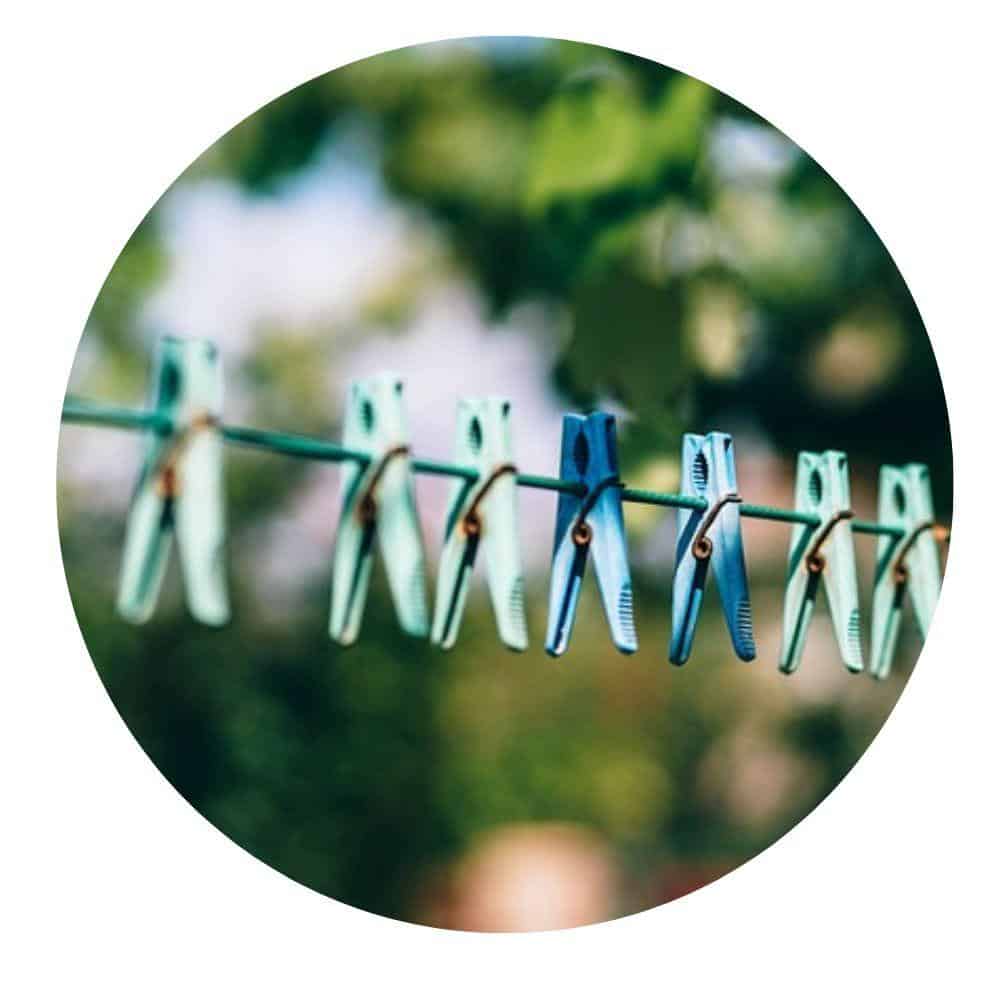
#17. Choose a front-loading washing machine
A front-loading washing machine uses less water and detergent than a top-loader, therefore reducing environmental impact. It also utilises gravity to spin the laundry faster and more efficiently, resulting in shorter cycle times and less water and energy.
Additionally, many modern front-loading washing machines have advanced features such as temperature, water level, and spin cycle selection. This allows you to customise your laundry cycles to ensure the best cleaning performance with minimal energy and water usage. Also, these machines are designed to last longer than their top-loader counterparts and require less regular maintenance.
#18. Use natural fabric softeners
Natural fabric softeners are made from plant-based ingredients and are often scented with essential oils, providing a pleasant odour to clothes without the use of synthetic fragrances. They can also help reduce static and soften clothes naturally, without the use of harsh chemicals or synthetic ingredients. Natural alternatives are also more cost-effective than conventional fabric softeners, as they require fewer repeated applications.
Best sustainable usage of energy
#19. Unplug unused electronic devices
Many electronic devices continue to consume electricity even when they’re not in use. To conserve energy and ensure an eco-friendly home, unplug the devices when they are not in use. This will help you to save energy and lower your monthly electricity bill.

#20. Use of natural light to light up a building
Daylighting refers to the utilisation of natural light to illuminate a building. This can be accomplished by using skylights, clerestory windows, and light wells to bring natural light into a building.
#21. Use energy-efficient lighting
Use Light Emitting Diode (LED) lighting or Compact Fluorescent Lamp (CFL) bulbs instead of incandescent lighting, as they have been shown to have a longer lifespan, reducing the need for frequent replacement of light bulbs.

#22. Go for renewables
Choosing renewable energy over fossil fuels is a great way to stop climate change and do your part in making things happen. For instance you can go for solar panels for electricity generation, solar water heating, etc.
#23. Use smart thermostat
The use of a wi-fi enabled smart thermostat (Nest Learning most especially) can save about 10-15 % on energy use (heating and cooling). They can be connected to central heating systems, boilers, and air conditioning systems. The global demand for smart thermostat has risen in the last decade

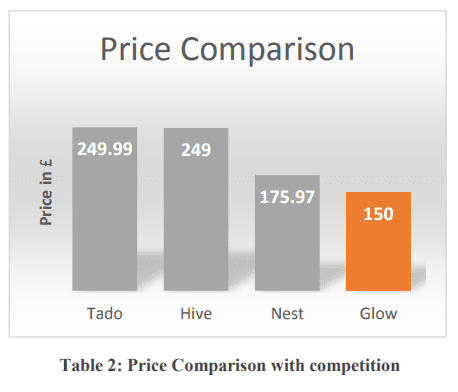
#24. Upgrade your boiler
Modern boilers now use condensing technology, which can be 25% more energy-efficient than non-condensing boilers because it uses waste heat to preheat cold water.
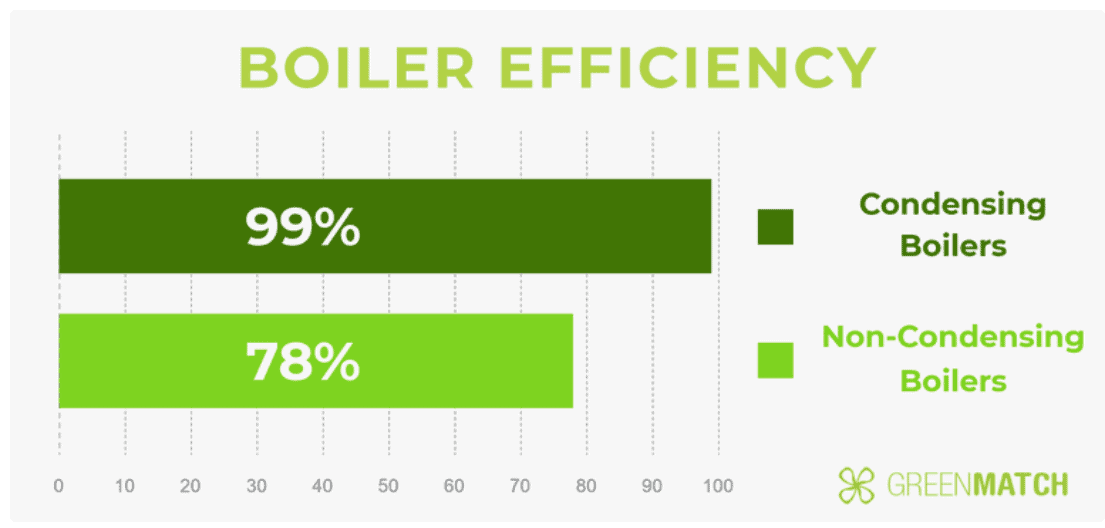
#25. Service your boiler regularly
In addition to upgrading your boiler, it is also very necessary to have them checked annually by a licensed expert to ensure efficient running. This is because boilers are likely to burn more fuel and thus increase energy usage as they get older. This will cause your bills to rise and your energy consumption to increase.
#26. Use Heat Pumps
Are you thinking of a drastic change or a new apartment with no previous installations? Then it might be worth going for heat pumps rather than boilers and air conditioners to ensure a new eco-friendly home. Heat pumps tend to extract heat from the ground, air or water and transfer the same into the home. Heat pumps eliminate the requirement for oil tanks and gas pipes. Studies show that Heat pumps are capable of generating 4kW of thermal energy per kWH of electricity used. This can result in approximately 200 to 600% efficiency rate compared to electric or gas heating.
#27. Solar thermal
Solar thermal systems utilise heat from the sun to provide space and water heating. Very high-temperature solar thermal systems can also be used to generate electricity. They can be used in combination with the usual hot water and heating system to diversify supply throughout the year. This can in turn result in saving of energy bills although this may still depend on what heating source is being used. Studies have indicated that solar Solar Thermal can yield approximately of energy when compared to its counterpart which is the Photovoltaic Solar (PV)

#28. Wear extra clothing
Rather than turning on the heating system, it’s better to put on an extra layer of clothing. Wearing more extra pairs of socks can also help to keep the feet warm in this regard.
Best green strategy for home insulation
About 40% of the heating energy generated in the home is lost through gaps in doors, windows and floor. To guarantee an eco-friendly home, there are different types of ways to save energy and to ensure that the heat is kept in. These are:
#29. Insulate walls, attic (or roof) and floors
Insulation acts as a barrier to keep the air inside your home in or out of your house depending on the season. Adding insulation to the walls, roofs and floors will significantly improve thermal insulation (reduce heat loss or gain) through these areas and will make your home more comfortable.

Insulation materials such as fibreglass, cellulose, or foam can be added to the walls, roof and floors to maintain the much-needed warmth in the winter and coolness in the summer.
#30. Draught-proof windows and doors
Weatherstripping, door sweeps, and using window seals can be another option you can use to reduce heat loss most especially during winter.
On the other hand, you may also want to sustain the heat in your home during the summer by preventing drafts from entering through windows and doors through draught-proofing.
#31. Use low-e window
Low-e stands for “low emissivity,” which means that these windows have a coating of metallic oxide that helps prevent heat transfer between the inside and outside of your home. This makes them highly efficient when it comes to regulating temperatures, resulting in lower energy bills and a more comfortable atmosphere in your home. Low-e Window can also reduce the amount of UV radiation that enters your home, which helps protect furniture from fading. They are also extremely durable, with some lasting up to 20 years or more without needing any additional maintenance or replacement.
#32. Try and block underwater drafts
Door snakes are an easy and effective way to make sure that drafts don’t let in that cold winter chill. Door snakes can be made out of fabric or foam, both materials being environmentally friendly options.
Fabric door snakes are great because they easily slide under the door, blocking drafts thus providing insulation. Foam door snakes are also great due to their easy installation, as well as their ability to fill the gaps in a door frame. Both materials are able to absorb sound waves to help make your home quieter.
#33. Install chimney balloon
Do you know that by installing a chimney balloon which is an inflatable device that can be inserted into a chimney, can help in blocking drafts and reduce heat loss in winter, thus resulting in an overall comfortable and eco-friendly home? Why not try this option as soon as you can possibly lay hands on one?
#34. Install energy-efficient ventilator
Installing a heat recovery ventilator (HRV) or energy recovery ventilator (ERV) can help to improve indoor air quality by replacing stale air with fresh outdoor air while recovering energy from the stale air. The potential carbon dioxide and cost savings from insulation and draught-proofing the home is given in the graphic below:
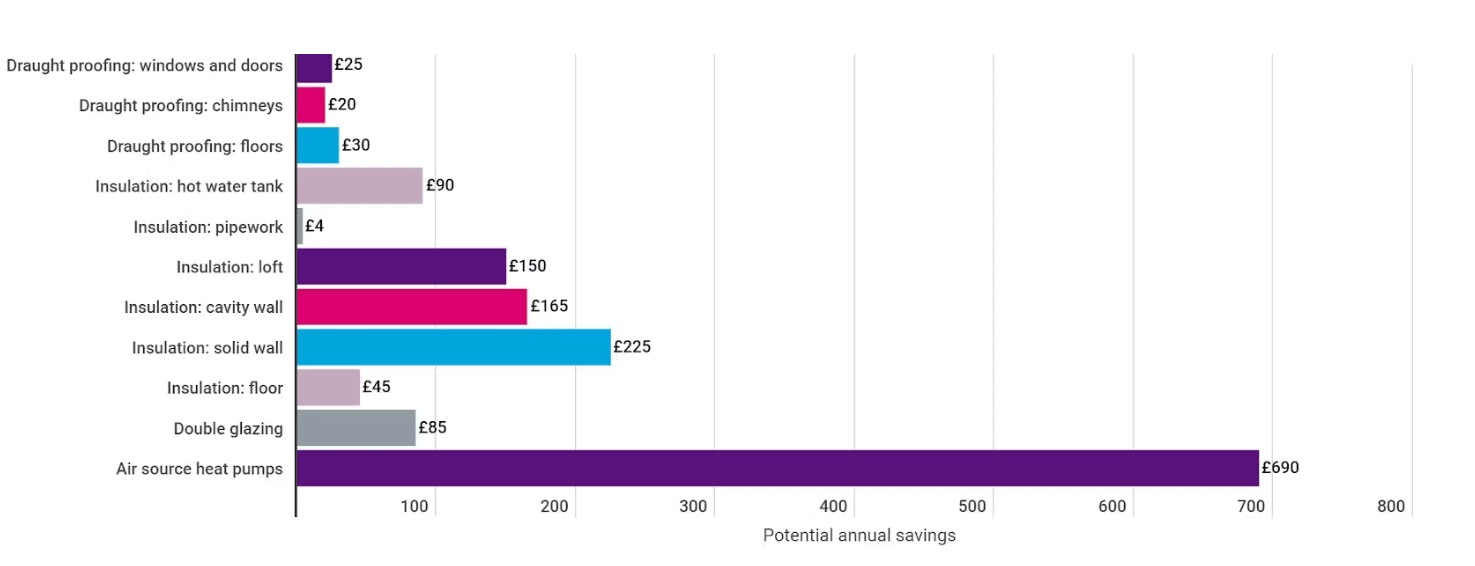
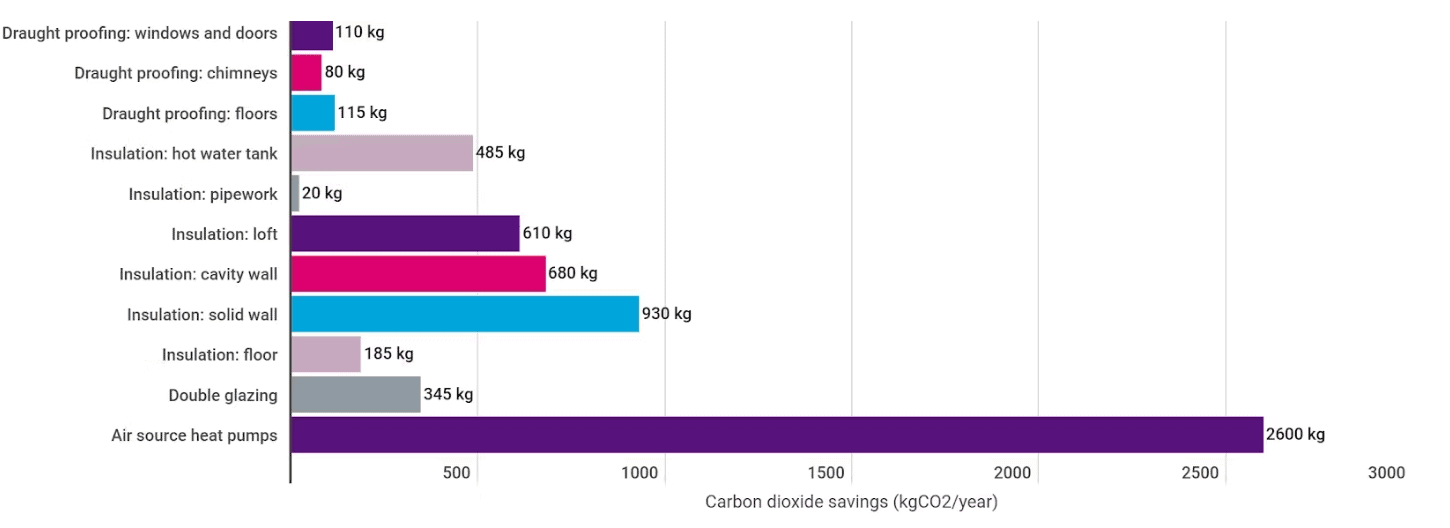
Best practices for sustainable shopping
#35. Shop for eco-friendly products
I believe it is worth emphasising again that you may need to make some life-style changes in terms of the nature of items you buy if you want to secure an eco-friendly home.
With a little bit of research about what regular products you purchase, you might want to opt for those that are made from eco-friendly materials such as organic cotton, bamboo, hemp, etc.
#36. Buy locally-made goods
Well, it is about time you begin to patronise your local store because it is very highly likely that they may be selling items and products you and the planets would need for survival.
By selecting products that are made locally, you would be doing well to support the local economies and decrease carbon footprinting caused by you having to travel long distances.
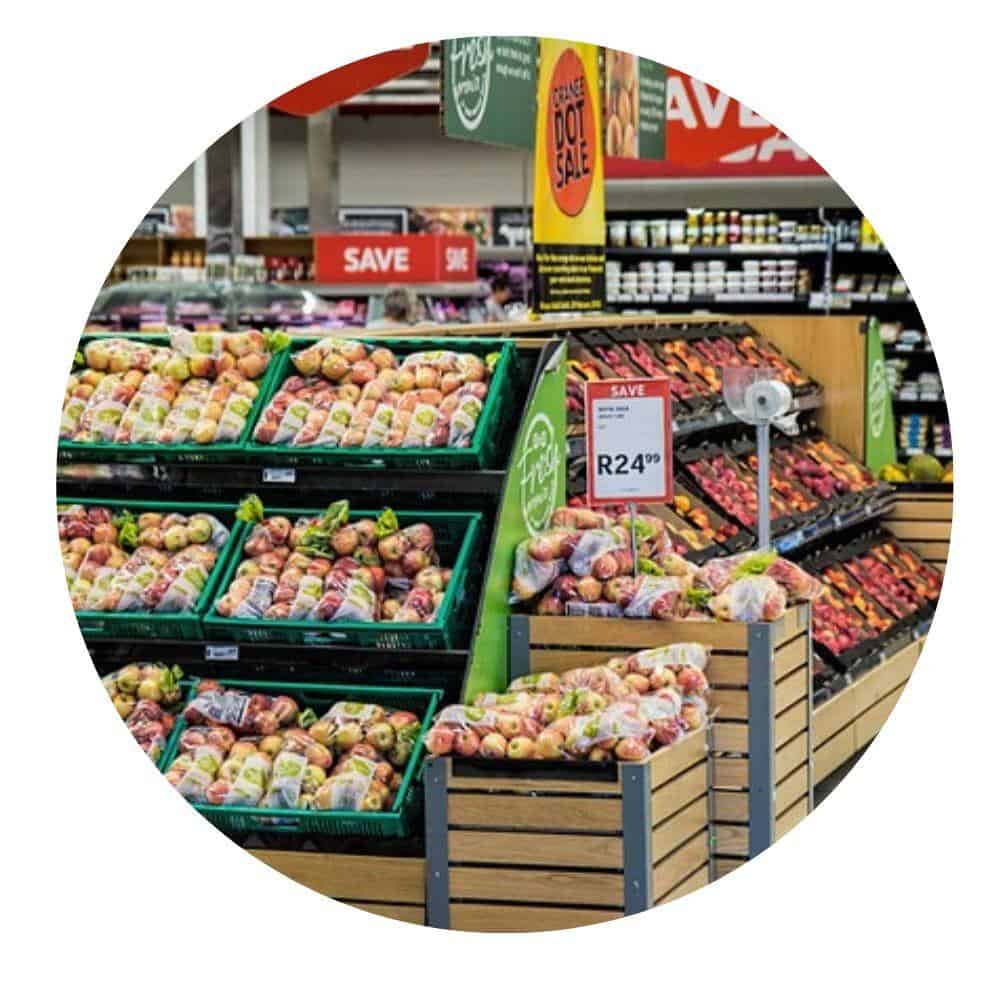
#37. Buy reusable items
Once again, this is another call-to-action for you to begin to go for those things that can be used again and again, that is, reusable or recyclable. This would require a lot of discipline and reminding though especially if you are not already in the habit of doing this.
There are endless examples of products that can be reused but the very frequently used ones are water bottles and cloth shopping bags.
#38. Reduce your consumption pattern
Well, I am aware that this is the area some might struggle with because there may be many caveats relating to eating or purchasing habits. Some people at the time of reading this article may be in certain situations or may have medical, religious or cultural obligations to do otherwise.
However, it might be worth treating this issue with great caution if an eco-friendly home is on the cards for you. But the bottom line still is that if you were to reduce consumption (assuming if one were not under any obligations), then decreasing consumption by only buying what is necessary and preferring quality over quantity can be a very wise thing to do.
#39. Consider renting or sharing
You might help to reduce the number of purchased products and by extension reducing emissions by opting for renting or sharing. This can also aid in minimising the cost of owning items as well.
I am sure those of our good friends, families, acquaintances, etc would not mind just sharing or if for any reason you want some increased levels of exclusivity, then renting would be another option.
#40. Go for second-hand items
Many thrift, consignment or charity stores are on the rise. These stores are really branding and rebranding to offer the best fairly used items to customers and those particularly interested in ensuring an eco-riendly home.
Why not try and go for second-hand things to prolong the life of the products and decrease the demand for new items, and ultimately reduce the environmental impact of production and disposal?
#41. Buy certified products
You may want to strife for product vigilance by ensuring that you educate yourself on their type, level of certifications or ratings. These are not hard to spot since they are in most cases inscribed on the body of the items you are buying. Sometimes, reviewer information offered by previous users can be useful knowledge to have.
In some instances, established organisations might also provide warning about the status of the product. It is therefore very necessary to be aware of certifications and labels on products like organic, fair trade, and sustainable certifications, to make informed decisions.
Best green solutions for transportation & commuting
Commuting is a major source of greenhouse gas emissions therefore finding sustainable ways to commute is an important step in reducing our impact on the environment. Here are some examples:
#42. Opt for walking or biking
This is one of the obvious ones but still worth mentioning. Driving is indeed a convenient thing to do especially if this has been a long-held habit. Depending on the situation one may find themselves, this might be the only option available on the cards.
However, with careful and reasonable planning and determination, walking or biking is safer both to us and the environment. It also has health benefits, and it can save you money.
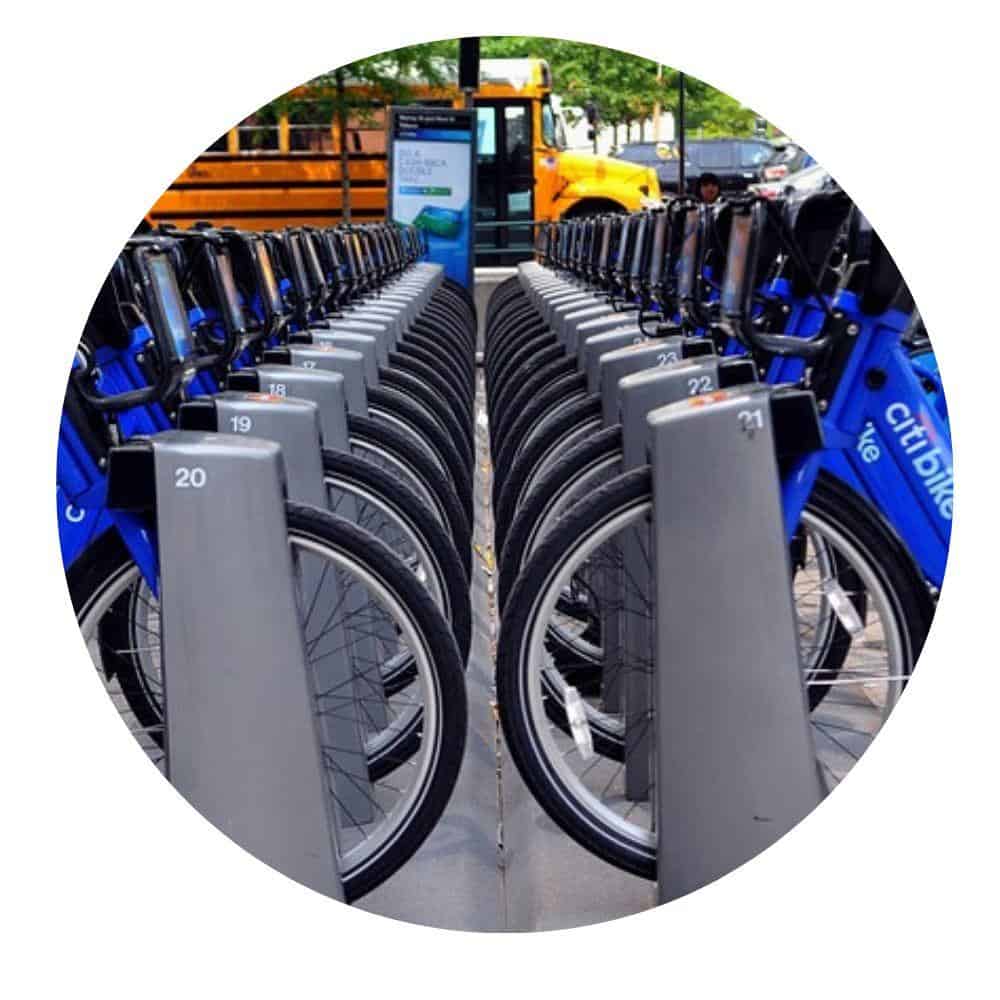
#43. Make use of public transport
This is another great option. It’s all about discipline and sacrificing comfort for the planet. By using public transportation like buses or trains to commute you will be reducing the number of cars on the road and saving energy as well.
#44. Think of carpooling
General trends across the globe indicate that car sharing is becoming increasingly popular. For instance, club car membership went from 32,000 in 2007 to 250,000 in 2018 in this regard. This may not have yet led to less cars being possessed, as there has been a 30% rise in vehicles per 1000 population in the past 25 years according to the Commission on Travel Demand, UK.
However, car-sharing can make a huge difference. Sharing a car ride with colleagues or friends can definitely lead to a reduction in the number of cars on the road with attendant savings in fuel cost.
#45. Use electric cars
Petrol and diesel cars contribute more to global warming. Transport alone accounts for approximately one-fifth of global carbon dioxide (CO2) emissions. The average petrol and diesel cars generate around 180g and 173g of CO2 per kilometre respectively in the UK for instance. Meanwhile 650g of CO2 per kilometre is produced from passenger cars in the US.
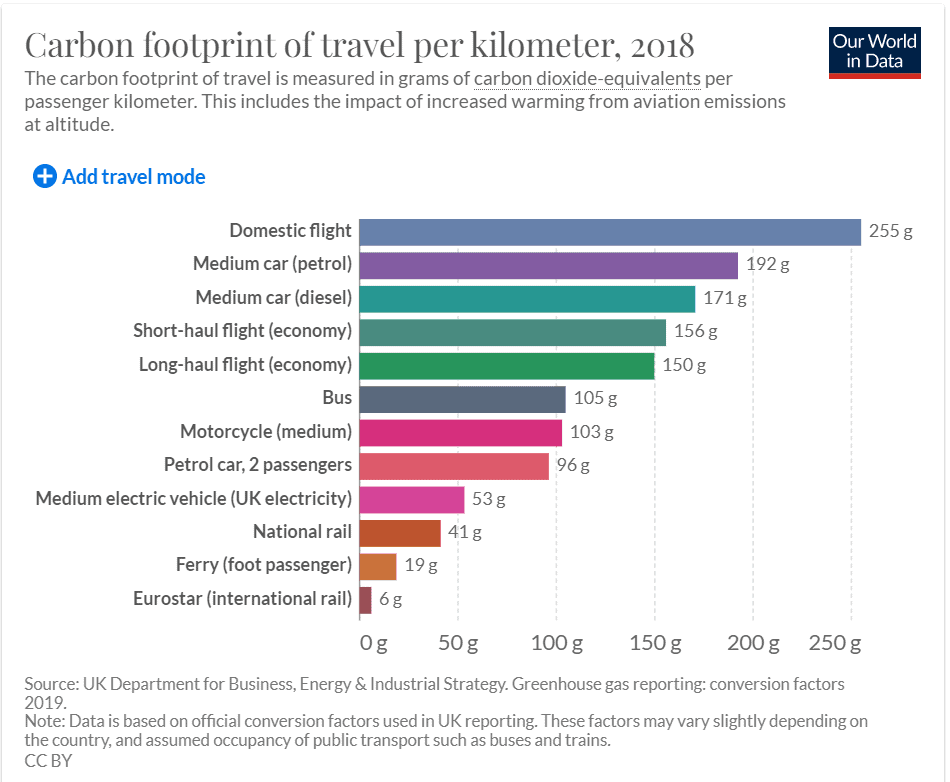
Using electric vehicles is therefore the logical thing to do because they are more sustainable. Electric cars do not produce any air pollutants like the traditional fuel-based vehicles.
#46. Go for hybrid vehicles
Almost similar to the previous point, you can consider having a hybrid car if you do not want to make a sudden break in the status-quo. Hybrid cars offer the option of both using fossil fuels and electric power. This is indeed a great way to transition from a completely fossil fuel option to a fully electric option.
Try to use hybrid cars and limit the amount of emissions than using a completely gasoline-powered vehicle.
#47. Do not fly often
Endeavour to reduce the amount of time you spend in taking flights. Undesirable gases emitted from flying can account for one-sixth of global CO2.
Sustainable aviation may not be very viable in the near future since progress in this area seems slow hence the best way is to reduce flying.
#48. Work from home if you can
Obviously, telecommuting is increasingly popular and allows employees to work from home or any other remote location, eliminating the need for a daily commute. This approach is friendlier to the environment and reduces traffic congestion, while providing convenience for both employers and employees alike.
Studies have shown that remote working can reduce commuting-related emissions by up to 15%, with a further 10% reduction in energy use due to the elimination of office equipment. By allowing employees to work from home, businesses can create more flexible schedules and reduce stress levels, leading to improved employee satisfaction and productivity. Furthermore, teleworking can benefit those with disabilities
#49. Adopt flexi-working if you can
As an employee you may want to adopt a more flexible working pattern if this is on the cards in your organisation or if you can afford to as the owner of a business.
By offering flexible working hours, rush hour traffic can be avoided as well as the reduction in the number of cars on the road during peak times.
#50. Buy and use electric scooters or bikes
Electric scooters and bikes are a great way to reduce your carbon footprint. They are powered by electric motors rather than gasoline, require little maintenance, and can be quickly charged with renewable energy sources such as solar power.
They also emit no air pollution or greenhouse gases compared to traditional combustion engines. Additionally, they are cost effective in the long run due to their low running costs and the lack of gasoline or diesel consumption.
Furthermore, electric scooters and bikes are lightweight and easy to manoeuvre, making them ideal for short trips around town.
#51. Rent a car
Although this has been indirectly mentioned in some sort above, you might want to go for the option of renting a car for most of your travelling.
Of course, by utilising car-renting services when needed, can decrease the number of cars on the road and save money.
#52. Plan your route
Yes, planning can be arduous for some people although some would live it to stay organised. But planning when considered in terms of travelling can be very beneficial.
Advanced route planning can help to avoid traffic congestion and find the most sustainable way to reach your destination.
#53. Avoid cruise holidays
Although cruise holidays are beginning to be popular it is very important to note that cruise ships have contributed massively to greenhouse gas (GHG) emissions. For instance, Carnival Corporation’s fleet of 47 ships emits 10 times more sulphur oxides (SOx) when compared to 100 million cars.
Best sustainable methods for gardening
#54. Try organic gardening
Organic Gardening uses natural methods to promote the health of soil and plants without relying on chemical fertilisers or pesticides.
Organic gardening is an important part of sustainable living because it helps reduce dependency on limited resources while protecting the environment from pollutants.

#55. Carry out composting
Composting is the natural process of decomposition and recycling organic materials into nutrient-rich soil amendment, known as compost. It is great at reducing the amount of waste sent to landfills and for improving soil quality. Composting requires minimal effort, yet it can make a huge difference in the text of this article.
#56. Plant drought tolerating crops
Drought tolerant crops are a great option for farmers who want to adopt sustainable and climate-resilient agricultural practices. These crops are able to withstand long periods of water scarcity, making them ideal for areas with low rainfall or frequent droughts.
They also require less irrigation than other crops, which can reduce water consumption and help conserve resources.
#57. Use native plants
Native plants are an increasingly popular sustainable option for landscaping projects. Not only are they often hardier and more drought resistant than many non-native varieties, but they also support local ecosystems by providing food and habitat for native wildlife.
Native plants can be used to create beautiful, low-maintenance outdoor spaces that require fewer resources and provide a variety of environmental benefits. Native plants can also help to reduce soil erosion and water runoff, making them an ideal choice for rain gardens, riparian buffers, or other areas where water conservation is a priority. By selecting native plants that are adapted to the local climate, gardeners and landscapers can create attractive outdoor spaces without the need for extensive maintenance.
#58. Consider water harvesting
Another way to help conserve resources is to take to water harvesting and related techniques of water recycling.
By implementing rainwater harvesting, greywater recycling, collecting and storing rainwater for later use in the garden, one can help in reducing water usage.
#59. Try soil conservation practices
Create soil conservation, using methods such as cover cropping, crop rotation, and reduced tillage to improve soil health and reduce erosion.
Grow different crops in the same area at different times, which can improve soil health, reduce pest and disease pressure, and increase biodiversity.
#60. Plant crops that are susceptible to pollination
You might want to introduce some pollinator-friendly plants into your farming or gardening practice
This method can aid in supporting local pollinator populations and improve the overall health of the garden.

#61. Reduce your lawn
It is not a bad idea to reduce the size or extents of your field.
By limiting lawn area, which may require a lot of water, fertilisers, and maintenance, you would be reducing water usage and creating more space for other plants to grow.
#62. Try mulching
Mulching is an effective way to protect your garden soil and plants. It helps maintain moisture in the soil, prevents weed growth, and reduces erosion. Mulch can be organic or inorganic material used to cover the ground around plants. Organic mulches such as bark chips, leaf litter, grass clippings, and compost can help improve soil fertility and create a better growing environment.
Inorganic mulches such as stones, gravel, and plastic can be used to block light from weeds and reduce moisture loss in the soil. Both organic and inorganic mulches should be replenished every season for optimum performance.
#63. Adopt intercropping
This is a type of crop rotation and involves growing two or more crops together in the same field and in proximity. This method of farming can be utilised to increase crop yields, improve soil health, and reduce the need for fertilisers and pesticides.
Intercropping can be used with a very wide variety of crops to improve biodiversity. The crops can range from grains and vegetables to fruit trees and livestock.
#64. Adopt natural pest control practices
Taking to this technique can certainly help in sustainable management of pests. There are many options out there, but you can use natural methods such as introducing beneficial insects, using companion planting, and using organic pesticides.
#65. Try vertical gardening
Vertical gardening is a technique of eco-friendly farming that is growing in popularity. This involves growing plants in a vertical orientation by adopting a wide range of methods including walls, trellises, or hanging containers. Vertical gardening can be carried out in many types of settings either indoor or in outdoor spaces.
By creating a vertical garden or a green roof as it is sometimes called, you can help reduce the urban heat island effect, improve air quality, as well as provide food or habitat for wildlife.
#66. Allow your grass to grow sometimes
Did you think about this choice of gardening before now? It might seem bizarre or strange at first.
However, the truth is that by letting the grass grow longer between cuts, you not only save petrol or electricity which will reduce carbon dioxide emissions, but you are also encouraging more wildlife into your garden. Longer grass is more drought resistant.
#67. Encourage hedgehogs
Do you know that hedgehogs have a very insatiable appetite for pests like slugs, caterpillars, and snails? They need easy access in and out of gardens. Why not get together with neighbours and arrange hedgehog holes between gardens? This should be approximately 13cm high preferably in a sheltered corner.
Best eco-friendly practices for clothing & fashion
Some of the suggestions offered in this section of the article might actually seem almost similar to the ones given on shopping; however, it is still very important to stress the need to be cautious and care for our planets in our fashion habits.
#68. Use natural textile products
Well, natural textiles have existed for thousands of years as clothing and other similar household items have been made from them. Natural textiles are plant-based and very biodegradable and easily recyclable. They are also soft, durable and also guarantee and eco-friendly home.
Examples of natural fibres such as cotton, linen, and hemp are more sustainable than synthetic fibres like polyester (made from fossil fuels).

#69. Buy long-lasting textiles
Fast-fashion is a trend with many buyers. Fast-fashion, is characterised by inexpensive and quickly produced clothes, usually made under poor conditions, and having a high environmental impact.
Rather than going for fast-fashion, choose high-quality, timeless pieces that will last for years and also save money in the long term.
#70. Use second-hand clothes
Although touched on when mentioning shopping above, but using second-hand clothing will certainly extend the life of clothes and reduce the demand for new clothing
But remember that reducing the environmental impact of production and disposal is our ultimate aim.
#71. Go for cloths made from low-impact dye
Low-Impact Dyes are made from natural materials and tend to use less water and energy during the dyeing process. Low impact dyes can be made from things like fruits, vegetables, leaves, roots, and seeds.
When compared to the traditional synthetic dyes, the process of making low impact dyes is often performed by using the hand and therefore is much less toxic. Low impact dyes are better for the health of the workers who handle them and of course for the people who wear clothes dyed with them.
With all these in mind, it is safe to say that low impact dyes are also less likely to release harmful chemicals into the environment and are considered more sustainable
#72. Do cloth remodelling
Many of us may have taken to this option in one way or the other. It may even have been carried out by someone else of which we were just beneficiaries.
It is still a good idea to repurpose old clothes as rags or donating them to a local mechanic if they are no longer wearable. You can also transform your old clothes into new garments all in a bit to ensuring an eco-friendly home
#73. Adopt basic mending or sewing skills
There are certainly a lot of skills that require our attention in the 21st century no doubt. However, although sewing skills may have been taught to us in basic education, it is still something we may need to imbibe if forgotten. Well, sometimes it’s just about having the necessary equipment at hand rather than the actual skill itself.
Have you ever needed to just quickly mend a cloth you so desired to wear or probably replace buttons? Well, you may want to make that effort to either acquire, remind yourself or get the needed equipment for basic sewing. But please take bigger jobs to an alterations shop.
Best sustainable products for baby-care
#74. Make use of organic products
You may want to consider using natural and organic baby products that are made with non-toxic and organic ingredients.
These products have proven to be even much better for the baby’s delicate skin and of course the environment.
#75. Avoid strollers
Don’t you think you may need to ditch the strollers and utilise baby carriers instead. Carriers are a more sustainable alternative and would definitely promote the needed bonding between you as a parent and your baby.
#76. Breastfeed your baby
I believe we have different opinions on this one, some of which might have some medical, religious and cultural bent to it.
However, breastfeeding is a sustainable and healthy way to nourish your baby because it can help to reduce waste and save money.
#77. Use second-hand baby items
In order to reduce the negative impact on our globe, why not opt for using second-handed baby items. It might even help if one is using an item that was already used by a sibling.
Choosing to go for fairly-used baby items can also reduce the impact of production and disposal thus securing an eco-friendly home for your little one.
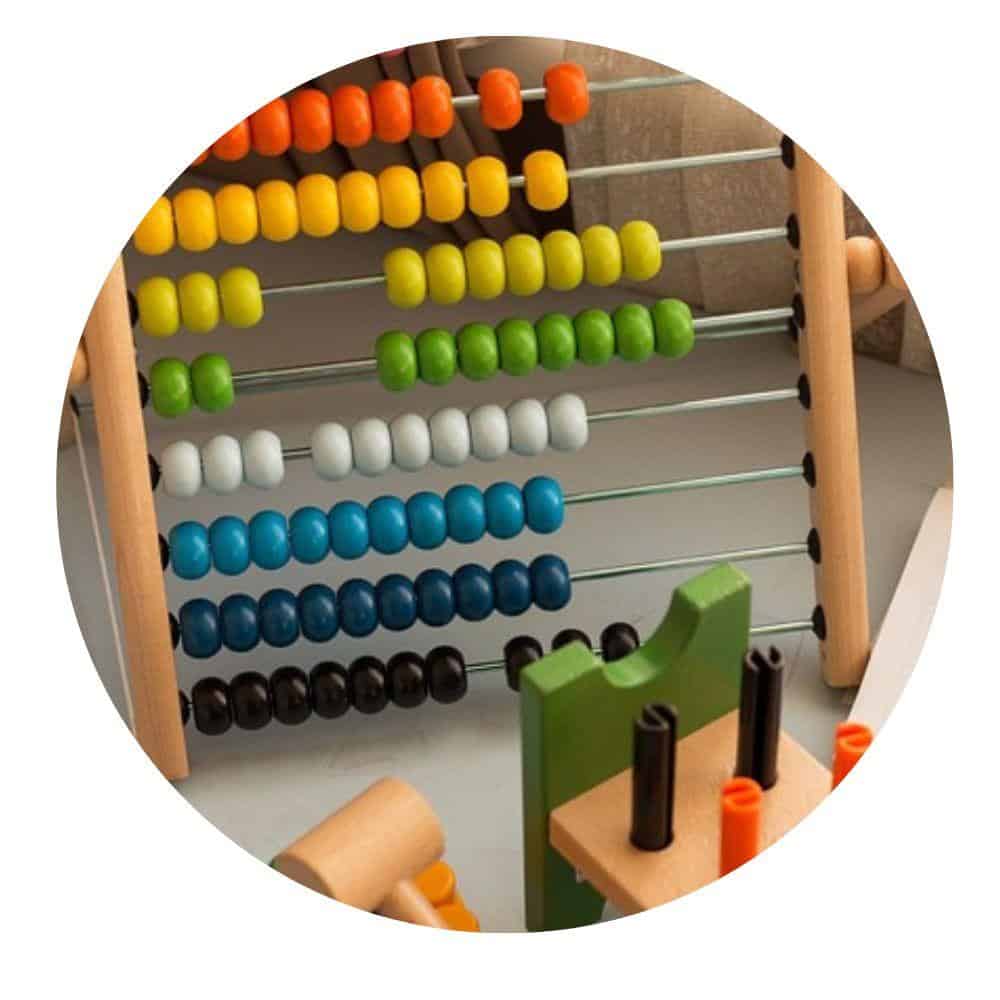
#78. Avoid disposable baby items
You may want to try and avoid utilising single-use baby products such as disposable wipes and disposable bottles. This can aid in reducing waste and saving money.
#79. Go for wooden toys
Most wooded plants are very regenerative. Hence, it might be very good to use those for the creation of baby toys.

It is incumbent on parents to choose wooden and non-toxic toys, which are more sustainable and safer for babies than the plastic ones.
Best eco-friendly kitchen
#80. Make use of non-disposable plastics
In order to create an eco-friendly home kitchen, try and make use of reusable containers for food storage and transportation. This action will certainly reduce the need for disposable plastics and they like.
#81. Make use of water filters
If you go for water filters, you are therefore tending to the elimination of plastic water bottles.
In fact, by having filters fitted to your supply, you would improve the taste and quality of your water.
#82. Opt for alternatives to Teflon coated cookware
Did you know that Teflon can negatively impact your health and the environment? It has been indicated that the manufacturing process of Teflon can release harmful chemicals such as perfluorooctanoic acid (PFOA) into the air.
PFOA has been known to cause health problems such as cancer, birth defects, and other developmental issues. Teflon does not biodegrade hence it might be better to use ceramic and stainless steel non-stick cookware.

#83. Do not waste food
The habit of wasting food is undesirable by many although almost everyone might be a culprit. This is of course us as humans instinctively desiring and eco-friendly home. So please endeavour to reduce food waste to save money and conserve resources.
It is easy to do this. Try meal planning, buying only what you need, and storing food properly.
#84. Pressure-cook your food
Some if not many people have adopted Pressure cooking which involves using steam pressure to cook food quickly and efficiently.
For those who are still using the traditional method or maybe sitting on the fence, it may be good to re-think this. The benefits of pressure cooking are immense and include saving energy, time, money, improved preservation, safety and versatility.
#85. Make use of non-disposable clothes
Let me stress here again! Although this time for your kitchen, using cloth napkins, towels, and dishcloths can help in reducing the use of disposable paper products. I addition to guaranteeing and eco-friendly home, you will also save money in the long run.
#86. Go for Solar-powered ovens
Try to use a solar oven which utilises the sun’s energy to cook food, it is a sustainable way of cooking that doesn’t consume energy.
#87. Sort your trash
Set up separate bins for recyclable materials, such as paper, plastic, and glass, and make sure to properly recycle them.
Best sustainable bathroom
#88. Use low-flow toilet
Go for low-flow toilets and showerheads to conserve water, save cost, save energy and improve performance. The DIY enthusiasts, there’s also the added benefit of the ease of installation if you decide to go for these.
#89. Adopt greywater recycling
If you are not already using this system, then please consider it for your new apartment or a refurbished one. This system of water reuse can be implemented for a non-potation purpose like toilet flushing. Implementing greywater systems to recycle and reuse greywater will sure mean you are considering having an eco-friendly home.

#90. Install a dual flushing system
You can try and make use of a dual-flush toilet. This will allow you or the user to choose between a full flush for solid waste and a reduced flush for liquid waste.
#91. Use low-flow aerators
Low-flow aerators are devices you can install on the end of your faucet (or tap) to reduce the flow rate of water while also maintaining or improving the water pressure. Unlike traditional aerators, they are designed to use less water therefore making them a more sustainable choice for an eco-friendly home.
Low-flow aerators can reduce water usage by up to 50% and in more specific terms, can reduce the water flow rate to less than 2 gallons per minute (GPM), compared to the standard flow rate of 2.5-3 GPM for traditional aerators.
#92. Install waterless urinals
Another way to develop the habit which ensures and eco-friendly home is to look into your urinals. By using waterless urinals, you might save up to 45,000 gallons of water per year and of course the enviroenment.
#93. Use bidets
I’m sure some would prefer to sanitise themselves by using bidets rather than the tissue paper. Kudos if you already do anyway.
But it might be worth installing a simple fixture that uses recycled greywater for washing up after toileting.
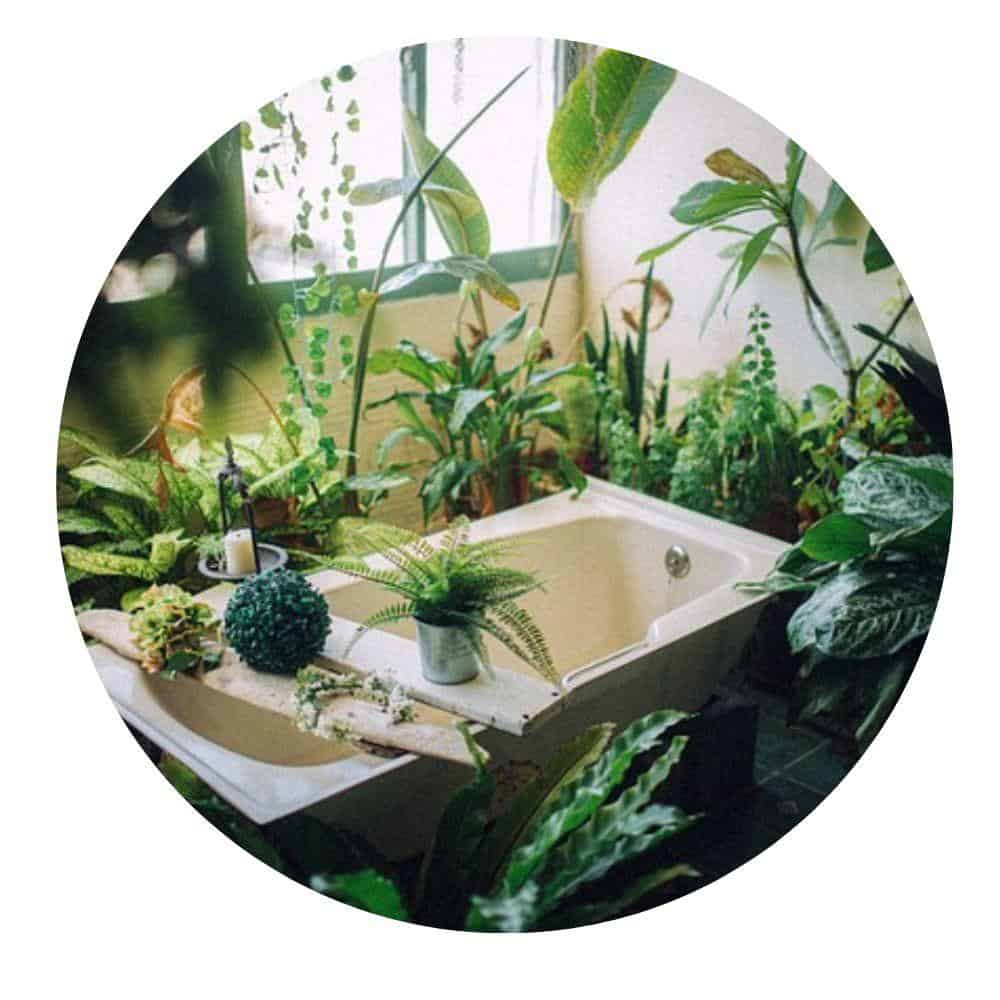
#94. Recycle bathroom items
You might want to start implementing a recycling program for bathroom items such as shampoo bottles, soap containers, and other packaging materials instead of dumping or disposing of them. By doing this, you are sure helping to create and eco-friendly home.
Best eco-friendly gift giving
Charity does begin at home. It might be best to be a true disciple of sustainability when considering the kind of gift to give to someone you cherish and love. To help them create an eco-friendly home, why not ensure to start giving them well-thought out sustainable gift ideas?
#95. Go for homemade gifts
You can make use of handmade or local items made by local artisans or craftspeople, or items produced by small businesses in your community. This option does certianly ensures and eco-friendly home for the taker.
#96. Take the gift of experience
Rather than giving a physical item, you can give the gift of an experience, such as a concert or a spa day, which can create memories and reduce consumerism.
#97. Consider charity gifts
Giving gifts that also support a good cause, such as a donation to a charity in the recipient’s name, or a gift that supports a social enterprise.

#98. Think of second-hand gifts
You can give items that have been previously owned, such as vintage clothing, furniture, or antiques.
#99. Make use of subscription-based giving
Give a gift that keeps on giving, like a subscription to a magazine or streaming service, or a membership to a local organisation.
#100. Give plantable gifts
You can give living gifts, such as plants or seed packets, which can be planted and grown in the future.
#101. Consider upcycled gift
Opt for giving gifts that have been repurposed or upcycled, such as a piece of jewellery made from recycled materials, or a handbag made from upcycled fabric.
#102. Give digital gifts
Make it a point of giving digital gifts, such as e-books, e-cards, or online subscriptions, which can save resources and reduce waste.
#103. Gift of education
Consider giving the gift of education, such as a class or workshop, which can help to build skills and knowledge in sustainable living.
Best General DIY and conservation strategies
#104. Try and fix it up
Well, I believe there are plenty out there who may not bother too much to go the extra mile to create an eco-friendly home. But it pays off on the environment to fix things up instead of throwing away broken items.
#105. Reduce water usage
Try as much as you can to fix leaks, take shorter showers, and use a broom rather than rely on a hose to clean driveways and sidewalks. This way you will reduce water usage.
#106. Use a refillable water bottle or coffee cup
Seems like too much to ask right? However if you can please by all means, use a refillable water bottle or coffee cup instead of disposable plastic bottles and cups to enable you to save a lot of waste.
#107. Create an e-waste recycling program
Did you know that electronic waste is one of the fastest growing waste streams for an eco-friendly home? You might want to create a system or program for recycling old electronic devices such as computers, televisions, and cell phones.
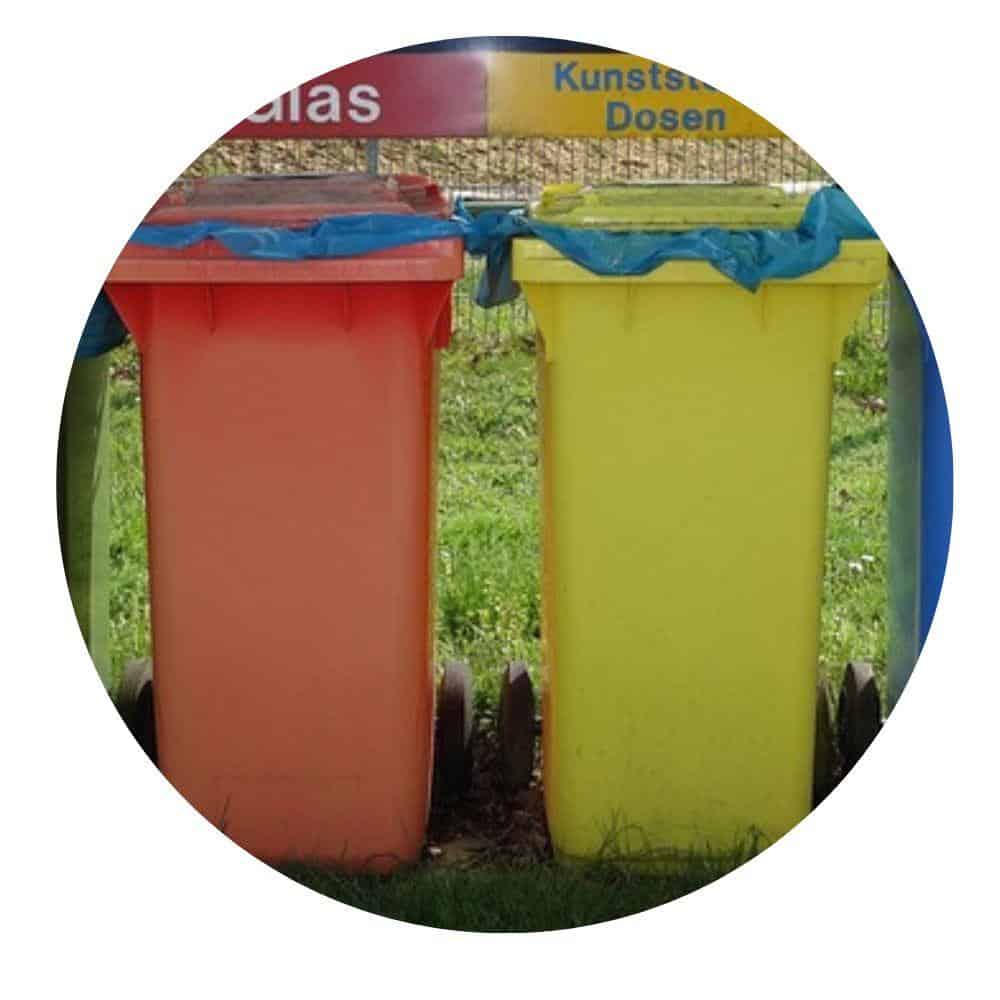
#108. Consider a reusable coffee filter
Why not do away with disposable paper filters? You can switch to a reusable alternative such as metal or cloth coffee filter to
#109. Use a refillable pen or pencil
There are good refillable options for writing out there. Please consider developing the habit of using refillable pens and pencils and similar writing materials instead of using the easily disposable ones.
#110. Reuse your drinking straw
Straw-making industries are really beginning to double up on this front. Please seize on this opportunity to utilise reusable metal or glass straws rather than using disposable plastic straws.
#111. Always think of reusable sandwich wraps
For my sandwich lovers. I am please imploring you to reconsider the way your food is being wrapped in this regard. Hence might want to go for reusable sandwich wrap made of cloth or beeswax Instead of using disposable plastic sandwich bags.
What is sustainable living
Sustainable or eco-friendly living is simply making choices that reduce negative impact on the environment while also ensuring that some of the basic needs of an individual, the community or society at large are met. All the practices listed above for ensuring and eco-friendly home will be necessary to take into consideration. Sustainable living outside of the home also involves practices such as ensuring fair labour and poverty reduction.
The United Nations Sustainable Development Goals (UN SDGs)
Since the ultimate goal of sustainable living is creating a more equitable future for all humans and the planet, The UN SDGs includes a set of 17 global goals which does also serve as a call to action for the elimination of poverty, protection of the planet and ensuring peace and prosperity for all. These goals can be found here.
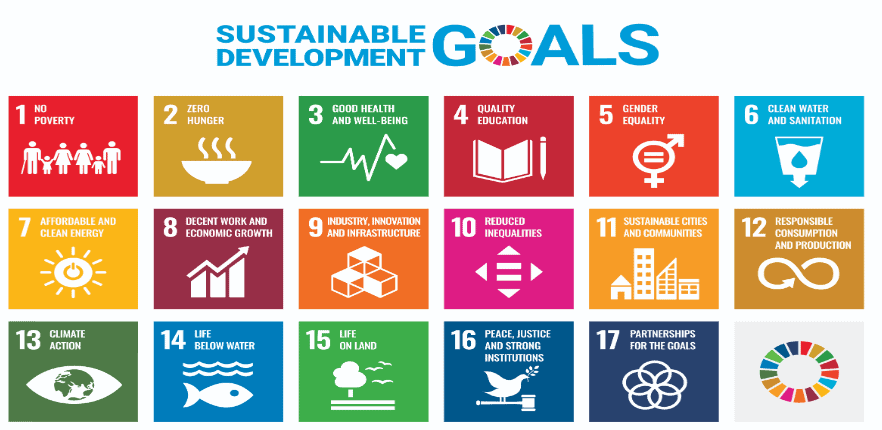
Benefit of leading a sustainable lifestyle
In summary, living sustainably at home can be very beneficial for the individual and the society at large. The list suggested above captures almost all the benefits you might derive which covers the following areas:
- Health
- The Environment
- The Economy
- Social life
FAQ
Frequently asked questions
Would living an eco-friendly lifestyle cost me money?
The short answer is “yes”; creating an eco-friendly home may involve additional costs compared to typical, non-sustainable practices. However, there are numerous ways that you can live a more sustainable lifestyle and save money at the same time. For instance, according to recent studies, individuals who used public transport rather than their own vehicles saved between $637 -$1020 per year (1). Furthermore, investing in a bike that fits your needs and maintaining it regularly is also cost effective since you won’t have to spend on gasoline or car insurance premiums.
How can I measure the sustainability of my actions?
Well, there are certainly various ways of getting to know and evaluate the leap you’ve made in living sustainably. One of the recommended tools is the Life Cycle Assessment (LCA) method. LCA typically has to do with the identification and quantification of the environmental impacts that are associated with steps you have taken. Once the cycle is completed the assessment can be presented in the form of an impact profile which will include information on the energy and resources consumption, the emissions that are released into the air and water, and waste generated from the product used.
Wrapping up
In conclusion, sustainable living carried out at home can lead to a more liveable, equitable, and prosperous future for mankind and the planet.

I’m a researcher, engineer, sustainability advocate and someone with a real passion for sports. If I am not in the laboratory or volunteering for some form of sustainability-driven initiatives, you can find me pretty much on the field either playing sports or watching my favourite teams and sportspersons on the TV. I strongly believe that through collaborative efforts and interdisciplinary approaches, we can create a more sustainable planet for all.
Contact
Have questions or need help? Please use the form to reach out .

